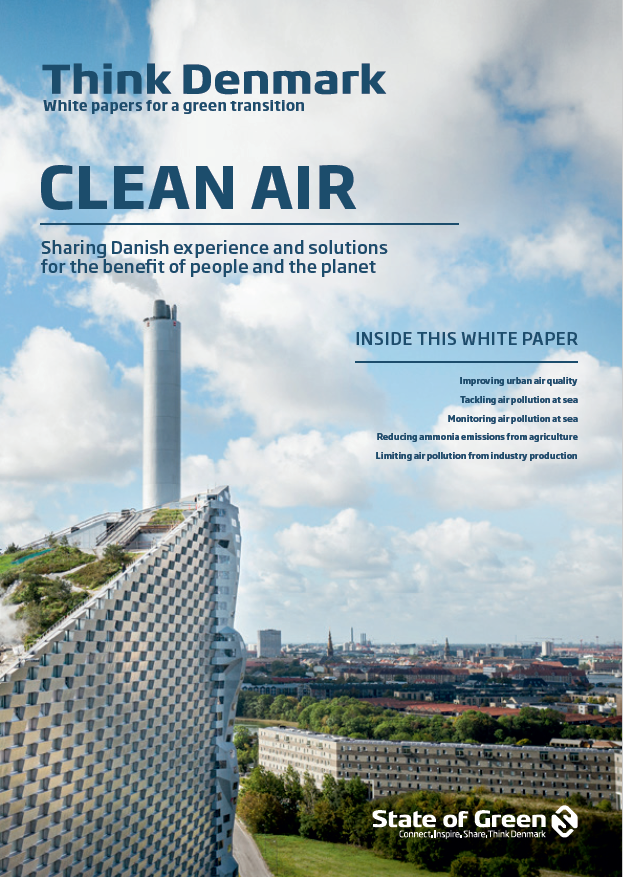Download our publication on clean air today
This article is part of our publication ‘Clean air’.
Download nowPerspective
Air pollution


Already in the late 1960s, sulphur dioxide (SO2) was recognised worldwide as an airpollutant with a series of negative impacts on human health and the environment. In 1972, this led to regulation of the sulphur content in fuel oils in Denmark. Through the Danish Environmental Protection Act of 1974, the authorities were now empowered to restrict air emissions from the industry and energy sectors. The Act proved to be an efficient instrument for
reducing local emissions of pollution and associated health risks.
During the 1980s and 1990s, Denmark was a frontrunner in establishing national and EU regulation to reduce air pollution and improve air quality in cities, developing and introducing regulation or standards for vehicle emissions as well as emission control requirements to urban power and heat production. Denmark was one of the first countries in the world to require catalytic converters in cars from 1990.
In 1990, the Danish Ministry of Environment issued a comprehensive set of guidelines for industrial air pollution control (these were revised in 2001). In parallel, the EU introduced emission limits for large combustion plants and the EU directive on Integrated Pollution Prevention and Control (IPPC) for large combustion sources as well as other major polluting industries imposed Best Available Technology (BAT).
Denmark is a large agricultural producer with a very extensive primary food production, which constantly has to be balanced with concerns towards human health and environmental impact. Accordingly, agricultural production in Denmark is extensively regulated to lower the ambient impact while
still maintaining a strong sector. Like in any other industries, large farms are required to obtain an environmental permit for operation that ensures a safe level of emissions and the application of BAT.
In 2008, the Danish Environmental Protection Agency issued the world’s first statuary order that included emission limit values for new wood stoves. As a significant player in the global shipping industry, Denmark has been pushing for more global regulation of emissions from shipping. At the same time, Denmark has been a main driver for establishing sulphur emission control areas in the Baltic and North Seas since 2015 and similar NOx control areas for new ships from 2021.
The environmental regulation in Denmark has always been founded on the capability of the industry to find new technologies and innovative solutions in response to the environmental needs, using both push and pull incentives. The high political ambition in Denmark in terms of environmental protection has been a major driver of this, pulling a continued development and marketing of new innovative solutions and techniques. At the same time, dedicated public funds for research, development and testing of new clean techniques have been pushing the development. The clean-tech sector is today one the fastest growing sectors in Denmark, and it is regarded as one of Denmark’s important research and industry strongholds.
An active Danish energy policy focusing on energy efficiency, energy diversification and developing renewable energy has resulted in a resilient and sustainable energy system in Denmark, with co-benefits for the levels of air pollution. As seen in the figure, the major changes of energy sources
from oil to coal to natural gas to renewable energy – have also lead to reductions in air pollution. An early decision in Danish energy policy was to place energy savings high on the agenda, pushing the industry to prioritise energy efficiency and promote energy savings in buildings. Today, the main climate driver in Denmark is the target to be independent of fossil fuels by 2050.

This article is part of our publication ‘Clean air’.
Download now